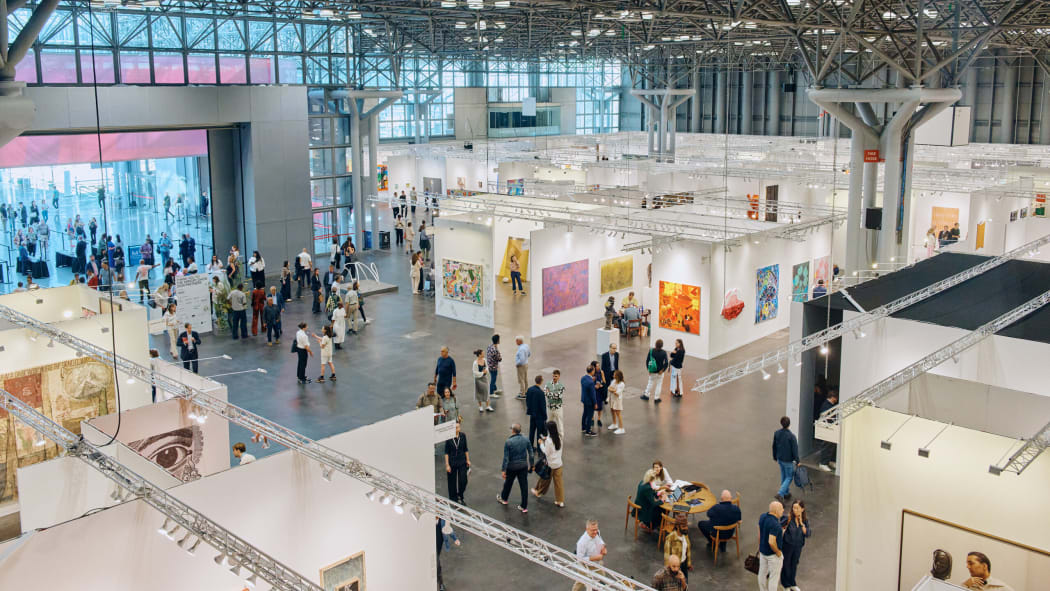
Galleries say they are facing unanticipated costs and jittery collectors despite longstanding exemptions for artworks.
Thomas Fuchs had finished packing up several paintings from his Stuttgart-based gallery that he was preparing to exhibit at the Armory Show in New York last week when his shipping agent warned him about an unanticipated problem. The art would not be subject to American customs duties, the agent told him, but he would have to declare each tool included in their shipment and pay a pricey fee on them because
President Trump had ended the “de minimis” provision covering less expensive items. Fuchs immediately pulled his power tools out of the shipping crate, flew to New York, and bought $200 worth of drills, screwdrivers, and nails at a Manhattan hardware store that he used to install the gallery’s booth before the fair’s Wednesday opening.
“It’s a shame,” Fuchs told Hyperallergic, noting that he wouldn’t be able to bring the items back to Germany. “The tools I can handle, the important thing is that the art is tax-free. It would be a catastrophe otherwise.”
The sweeping array of emergency tariffs that Trump imposed on foreign trade in April has injected a new level of uncertainty during one of the art world’s busiest sale seasons. Artworks have largely been exempt from the new duties because they are generally categorized as cultural and informational materials, along with photographs, posters, publications, and other media, in the International Emergency Economic Powers Act.
But several international galleries at last week’s fairs faced unanticipated costs from reciprocal levies depending on the type of object they shipped and what method they used to send them, not to mention jittery American buyers reluctant to fork over additional fees.
But artworks that faced the most scrutiny from customs officers were imported from China. Gallery reps with Tang Contemporary Art, which has eight outposts across East Asia and had a large booth at the Armory Show with several paintings, ceramic sculptures, and Ai Weiwei photographs, expected to encounter tariffs on Chinese works sold at the fair, but did
not know what the customs rate would be.“It’s scary for a gallery when these changes are occurring so quickly,” said Cynthia Liu, director of Tang Contemporary’s Bangkok branch. “You might agree to a price in one country and suddenly find out the shipping fee went up 20%. We have to be ready for anything, really.”
Art advisors say that even though most artworks should be exempt from tariff laws, some items like decorative or industrial arts, as well as jewelry, may be more difficult to justify, even if a gallery is selling them.
The future of tariffs on art and other materials remains cloudy as the Supreme Court is set to make a ruling on Trump’s trade duties this fall. If the Supreme Court finds that reciprocal tariffs were an overreach, the federal government could even issue rebates, Treasury
Secretary Scott Bessent told NBC’s Meet the Press on Sunday.